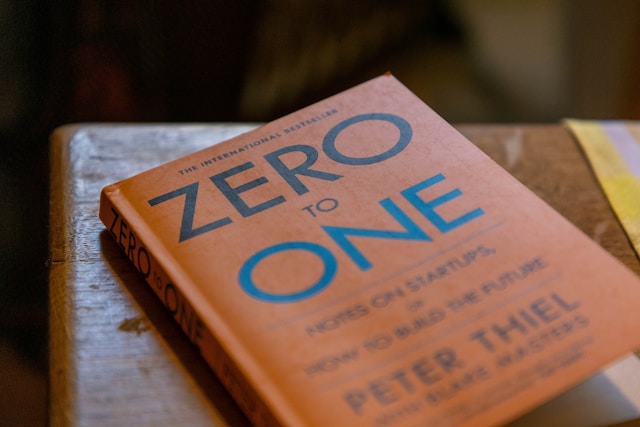Feminism in American literature written by female authors has come a long way since the suffrage movement. Women writers have been using their words to fight for gender equality and challenge societal norms for centuries. From Mary Wollstonecraft’s “A Vindication of the Rights of Woman” to Roxane Gay’s “Bad Feminist,” each generation of women writers has built upon the foundation laid down by their predecessors. In this blog post, we will take a journey through time, exploring how feminism in American literature written by women has evolved from its early beginnings to the present day #MeToo movement. So buckle up and get ready for an enlightening ride!
48-1896: The Rise of Feminism in America
At the beginning of the 19th century, women writers in America were few and far between. However, their numbers gradually increased as more and more women began to demand equal rights. The suffrage movement played a significant role in this rise of feminism.
Elizabeth Cady Stanton’s “Declaration of Sentiments” was a key document in the early feminist movement, which demanded political equality for women. Other influential works during this period include Charlotte Perkins Gilman’s “The Yellow Wallpaper,” which addressed issues surrounding mental health and gender roles.
Despite these early efforts towards female empowerment, it wasn’t until 1896 that progress began to be made on a national level with the establishment of National Association of Colored Women (NACW) by African-American women. This organization sought social justice reforms and provided education opportunities for black girls.
By the end of the century, American literature written by female authors had become increasingly focused on themes related to social reform and gender equality. Women like Frances E.
W.
Harper worked tirelessly through their writing to promote racial equality at a time when racism was still rampant across America.
This period marked an important turning point in feminist literature as more women became educated and began expressing themselves through writing. The stage was set for future generations of female authors who would continue fighting for gender equality in new ways over time.
1896-1936: The Struggle for Equality
During the period of 1896 to 1936, women in America were fighting for their rights and opportunities that had been denied to them for centuries. The suffrage movement was at its height during this time, but despite gaining the right to vote in 1920 with the Nineteenth Amendment, women still faced many obstacles.
One significant barrier was employment discrimination. Women were often paid less than men for doing the same work and were restricted from certain professions. This led to the formation of organizations such as the National Women’s Trade Union League, which fought for better working conditions and pay equality.
Additionally, racial inequality further complicated matters as women of color faced even more discrimination and limitations on their rights. African American writer Zora Neale Hurston addressed these issues in her works by highlighting the intersectionality between race and gender oppression.
Literature written by women during this time also showcased how societal expectations continued to limit their freedom both personally and creatively. Edith Wharton’s The Age of Innocence depicted a woman who is unable to fulfill her desires due to society’s restrictions while Willa Cather explored themes of female independence through her novels My Ántonia and O Pioneers!.
This period marked an important turning point where feminist writers began addressing not only political inequalities but also social norms that limited a woman’s potential.
1936-1972: The Development of Feminist Theory
During the period of 1936-1972, feminist theory underwent significant development in American literature. Women writers began to explore and articulate their experiences through literature, highlighting issues such as gender inequality, patriarchy and sexism. This period saw a rise in feminist literary criticism that challenged traditional interpretations of texts.
One of the most prominent figures during this era was Simone de Beauvoir who published “The Second Sex” in 1949. Her work provided a critical analysis of the patriarchal society and highlighted how women were oppressed by men.
Another notable figure was Betty Friedan whose book “The Feminine Mystique” (1963) became a cultural phenomenon by challenging the notion that women’s primary role is to be wives and mothers. The book sparked consciousness-raising groups across America which led to forming organizations like National Organization for Women (NOW).
During this time, feminism emerged not only as an intellectual movement but also as a political one with feminists increasingly fighting for legal rights such as equal pay and reproductive rights. Feminist activism led up to landmark cases like Roe v Wade decision on abortion rights.
In literature, authors like Toni Morrison explored themes around race and feminism while Audre Lorde wrote about being black lesbian mother battling against societal norms trying to silence her voice.
It can be said that the development of feminist theory during this time laid foundation for contemporary understanding of gender equality issues today.
1972-2018: The Emergence of Feminist Voices
The period from 1972 to 2018 saw a significant shift in the way feminism was viewed and approached. During this time, feminist voices began to emerge more strongly than ever before, with women writers leading the charge.
In literature, female authors started writing about their experiences as women in a patriarchal society. They unapologetically tackled issues such as reproductive rights, sexual harassment, gender discrimination and domestic violence. Their works not only highlighted these problems but also offered solutions for them.
The emergence of feminist voices led to an increase in awareness about gender inequality and encouraged more women to speak up against it. Women’s participation in political movements also grew during this time. Feminist organizations like NOW (National Organization for Women) became prominent players advocating for equal rights for women.
Feminism went through several waves during this time span too – third-wave feminism being perhaps one of the most notable ones that focused on intersectionality among different identities besides just gender. This wave helped bring forth many key ideas like body positivity, privilege checking or calling out micro-aggressions which have been instrumental even today.
The emergence of feminist voices marked a turning point in American literature by providing space for marginalized communities within publishing houses while raising consciousness around social injustices that still exist today despite progress made over decades since suffrage times till date
Conclusion
The evolution of feminism in American literature by women writers is a testament to the enduring fight for gender equality. From the suffrage movement to the #MeToo era, female authors have used their art as a platform to challenge societal norms and advocate for change.
The literary works discussed in this article shed light on how feminist thought has evolved over time, from simple demands for voting rights to complex critiques of patriarchal structures deeply embedded in society. These writings reflect not just personal experiences but also larger political movements that shape our world today.
It is important to continue supporting female voices and amplifying them through various mediums like books, blogs or podcasts. Through these platforms, we can further advance gender equality and inspire others towards progress.
As we look towards a future where everyone is treated equally regardless of gender or identity – let us always remember that every step taken towards justice counts.







